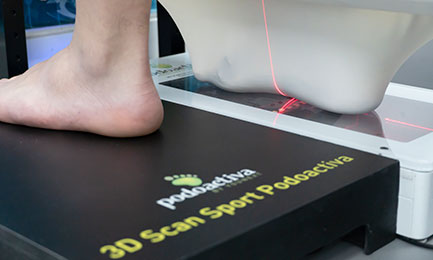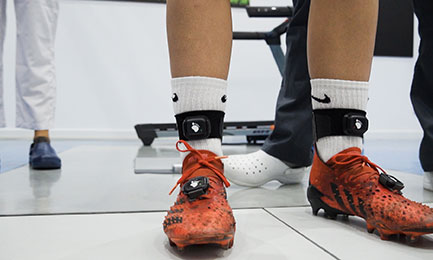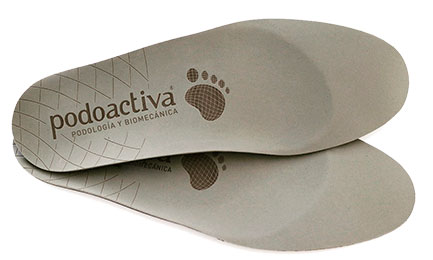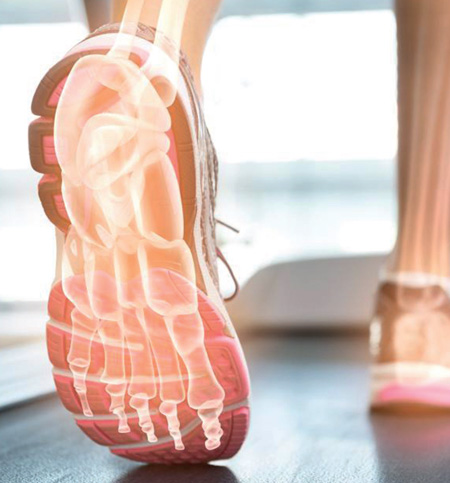Sport Center

Podiatry Unit: Biomechanics and Gait Study
We carry out biomechanical gait studies that help us understand the way we walk. In this way we prevent and treat possible injuries in everyday life and sports.
At the Olympia Podiatry Unit, we carry out biomechanical gait studies that help us understand the way we walk and thus prevent possible injuries in everyday daily life and sports, such as sprains, metatarsalgia, plantar fasciitis, heel spurs, tendonitis, etc. In general, the biomechanical study of the footprint can be a valuable tool to prevent injuries, treat existing injuries and improve performance.
- To assess the risk of injury: by analysing the way the foot interacts with the ground, it is possible to identify if there are areas that are bearing more weight than normal, which may increase the risk of injury.
- To treat injuries: If you have already suffered a foot injury, a footprint study can help determine the underlying cause of the injury and assist in designing an effective treatment plan.
- To improve performance: When you are an athlete, a biomechanical footprint study can help identify areas where you can improve your running technique to improve performance.
The unit aims to contribute to the diagnosis, treatment and prevention of injuries and disorders of the musculoskeletal system, as well as improving athletic performance and quality of life.
Featured technology
- 3D Scan Podoactiva®

3D Scan Podoactiva®
A worldwide patent from Podoactiva to design foot moulds, both physical and virtual. This scanner helps us obtain a virtual image of the foot by laser, stepping through an elastic membrane, with adjustable tension, which achieves an optimal geometry for the subsequent design of the personalised insole. When the mould is obtained directly by placing the foot on the glass, as is the case with other scanners available on the market, both the image of the heel and the forefoot are flattened and the plantar arch is significantly reduced. This exclusive system from Podoactiva allows us to obtain a virtual image with an accuracy of one micron and in a real situation of patient load, registering the soft tissue and simulating the situation inside the shoe.
Once the virtual mould has been obtained, Podoactiva’s engineering department designs the insole using specific Podoactiva software which applies finite element calculation concepts (a system exclusive to Podoactiva worldwide) to enable a virtual simulation of the behaviour of the insole in the patient’s foot, taking into account its geometry, weight and dynamics.
- Podoactiva IMUs System

Podoactiva IMUs System
This is a biomechanical analysis system that uses inertial sensors to measure and record different aspects of human body movement. Inertial sensors are small, lightweight electronic devices that measure acceleration and angular velocity in three dimensions and are placed on different parts of the body, such as the feet, legs, trunk and arms. These sensors are able to measure body movements in real time, and the data is transmitted to specialised software that processes and analyses it. It is mainly used in gait and sports movement analysis. With the data obtained, we can identify abnormal or inefficient movement patterns and design personalised treatment and training plans for each individual.
- Podoactiva insoles

Podoactiva insoles
These are designed to correct biomechanical problems of the foot and gait, such as excessive pronation, supination, flat feet or pes cavus, among others issues. They can also help reduce pain and improve physical function in different conditions, including plantar fasciitis, heel spurs, metatarsalgia, tendonitis, and so on. In addition, Podoactiva insoles can be adapted to different types of footwear and activities, such as running, walking, work or specific sports. They can also be updated and modified as the patient’s physical activity changes or evolves.
Featured treatments

Biomechanical gait study
This is a detailed assessment of a person’s movement while walking and is very useful in the diagnosis and treatment of various musculoskeletal conditions, as well as improving athletic performance.
The study uses a combination of analysis tools to measure and record different aspects of a person’s movement, such as posture, balance, step length and cadence, load distribution on the feet, and overall gait mechanics.
These tools may include high-speed video cameras, pressure sensors, force platforms, accelerometers and electromyography (EMG). The information collected is used to identify abnormal or inefficient movement patterns, and to determine which parts of the body may be contributing to movement problems.
With the data obtained, we design a personalised treatment plan for the patient, which may include strengthening exercises, stretching, manual therapy, footwear modifications, orthotics or other treatments, with the goal of correcting abnormal movement patterns and improving the patient’s physical function.
What does a biomechanical footprint study consist of?
- Muscle examination on a stretcher
- Static and dynamic analysis with pressure platform
- 4D biomechanical analysis together with the Podoactiva IMUs System (Intelligent sensors for measuring gait parameters to help detect possible pathologies).
- If necessary, prescription of personalised Podoactiva insoles
- 3D manufacture
- 100% personalised
- Lightweight and breathable
- Optimal cushioning and comfort
- Biodegradable
- Long durability


